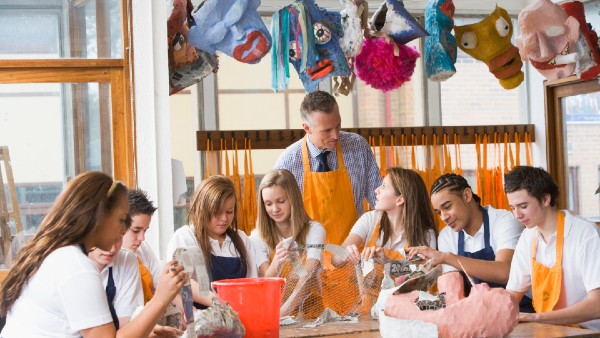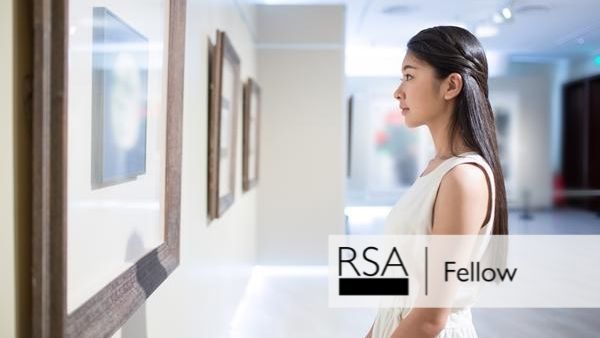In April 2020, Kate Rolfe FRSA, Director of The Revels Office, held the first ‘Catalyst Thinks’ workshop designed to discuss strategic challenges faced by the arts sector, with a focus on revenue and audiences. The workshop explored the changes the arts sector should consider if they are to overcome the challenges they face now and to break down longer-term barriers that were present before the pandemic. Here Kate shares the thinking behind this work.
Now more than ever people are engaging with the arts. From taking up creative new hobbies to watching live performances online, it is not hard to see that the world in lockdown is fully appreciating the value that the arts play in their wellbeing and happiness. Given this, combined with the new channels that have opened up for sharing content and communicating online, it would be tempting to immediately start to do more, and to come up with new outputs, as a way to protect arts organisations from reliance on the markets now shut away from them at home.
While innovation and agility is important, in the first instance the arts sector needs to consider consolidation rather than growth as the driver behind this. By taking time to review what arts organisations have that is of most value – be that a piece of content, an in-house expert, a brilliant educational course, a particularly strong business line – organisations can make a consolidated plan for how to realign their outputs against their core objectives. The aim should be to bring all teams together to focus on a few successful activities, using the full impact of their skill-areas to create and promote these, and then growing them at a steady pace across multiple channels and audiences. Such an approach will help arts organisations to focus on what is working and to join together to do this more, making a better return, sharing a clearer message, and investing in their teams in a more effective and stimulating way.
Redefine and recommunicate value
There is an opportunity to find some good out of a very bad situation, by engaging with people when creativity and culture is something they are proactively seeking out. For too long the arts has been seen by many as optional, exclusive or unimportant; we now have a moment to re-establish and, in some cases to redefine, its value to the public, to policymakers, to funders and to other sectors.
There are numerous bodies and initiatives working to pilot cross-sector working, which has boundless opportunities for the arts. In order to be successful in this area, cultural organisations need to be creative and targeted with how they present their skills, services and creations to entice new partners to invest in them. This could range from promoting the wellbeing benefits of arts practise or the value of using arts programming for place-making, through to demonstrating the financial return of co-branded experiences or product lines, and even the value of using artistic methodology to solve critical business problems.
Messaging – and that all important art of story-telling – is absolutely key; cultural organisations need to be creative and clear in their messaging if they are to show people why they might need the arts in the near-future to add value to their personal and business lives.
In addition, arts organisations need to consider incorporating more dynamic practises into their marketing and operations, responding to external demand in a more discerning way. Consider the benefits of dynamic access to programming, mixing new and historic content on live and digital platforms and adjusting the offer depending on who engages with it and when they have time to participate. How about dynamic opening hours, adjusting when the doors open to best serve those who walk through them?
These ideas all require an in-depth knowledge of audiences, simple and adaptable channels to communicate with them, and a mixed creative and commercial approach to implementation. This is not to say that from now on the arts should only base decisions on what audiences request of them; it is vital to not limit the wonderful inventions that come from allowing creative people the freedom to create. However, as we see in other sectors, it is important to adapt output around market’s needs and availability; as the world shifts to a hybrid-state of live and digital, so too the arts should pursue a more audience-led, agile approach to sharing and selling the incredible work they come up with.
Collaboration as the new normal
Looking ahead to where the workforce is going, we see a future of mixed working patterns, higher numbers of freelancers, and a new balance between work and home life. Collaborative working is a great fit for more dispersed teams, bringing people together with a shared objective and a truly ‘one-team’ approach; this will prove especially useful for larger arts organisations who need to rapidly discover new value from within their existing resources.
Arts organisations are creative to their cores; they should embrace the inventive practises that some of the world’s top businesses now follow, using imaginative, well-designed and cooperative methods to streamline internal processes and deliver more innovative and strategic output. This is by no way a quick fix or necessarily about reducing the size of team. Rather, it is about a long-term shift towards integrating internal teams in order to free people to do what they have been hired to do, without being held back by unnecessary process, hierarchy or tradition.
Now is the time to act, even if only to try and test ideas while audiences are keen to embrace the mood-enhancing and thought-provoking benefits of cultural activities. Most importantly, before any action is taken, organisations must listen. Listen to those who are at home, to supporters, to their members, to their staff and to the practitioners behind the art. From listening comes new ideas; consolidate those ideas, and then take action.
To see who contributed to the first Catalyst Thinks session and read the full article please read on here. The next online Catalyst Thinks workshop is planned for 22 June, with a live version at RSA House scheduled for 5 October To propose a question for the group to debate or to find out more about joining the discussion, please contact Kate Rolfe, Director of The Revels Office on kate@therevelsoffice.co.uk An extended version of this article is available here.
Related articles
-
Artificial intelligence: the creative edge
Alex Soulsby
How should schools respond to AI? Alex Soulsby calls for a greater focus on the arts to help students develop their creativity, critical thinking, adaptability and emotional intelligence.
-
The magic of the ocean
Fiann Paul
The oceans are the least accessible and most mysterious regions on Earth, and humankind has a deep and eons-old relationship with the sea. Fiann Paul, FRSA, selects five stunning animated films that explore this emotional, almost mystical, bond, and warns that we abuse the oceans at our peril
-
Curating Tomorrow
Henry McGhie
Museums curating consultant Henry McGhie asks how museums and other cultural institutions can support people’s participation in climate action and sustainable development?




Be the first to write a comment
Comments
Please login to post a comment or reply
Don't have an account? Click here to register.